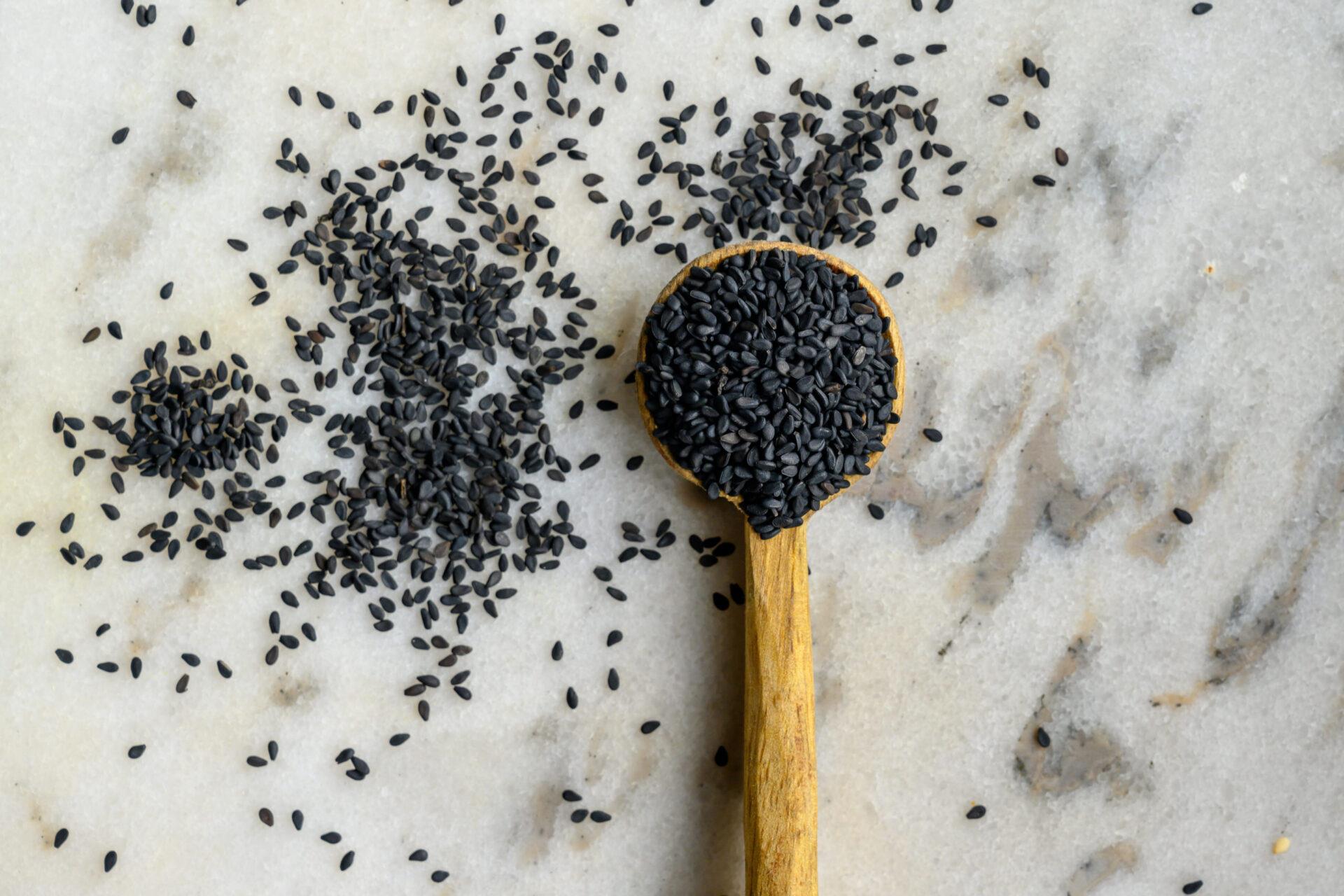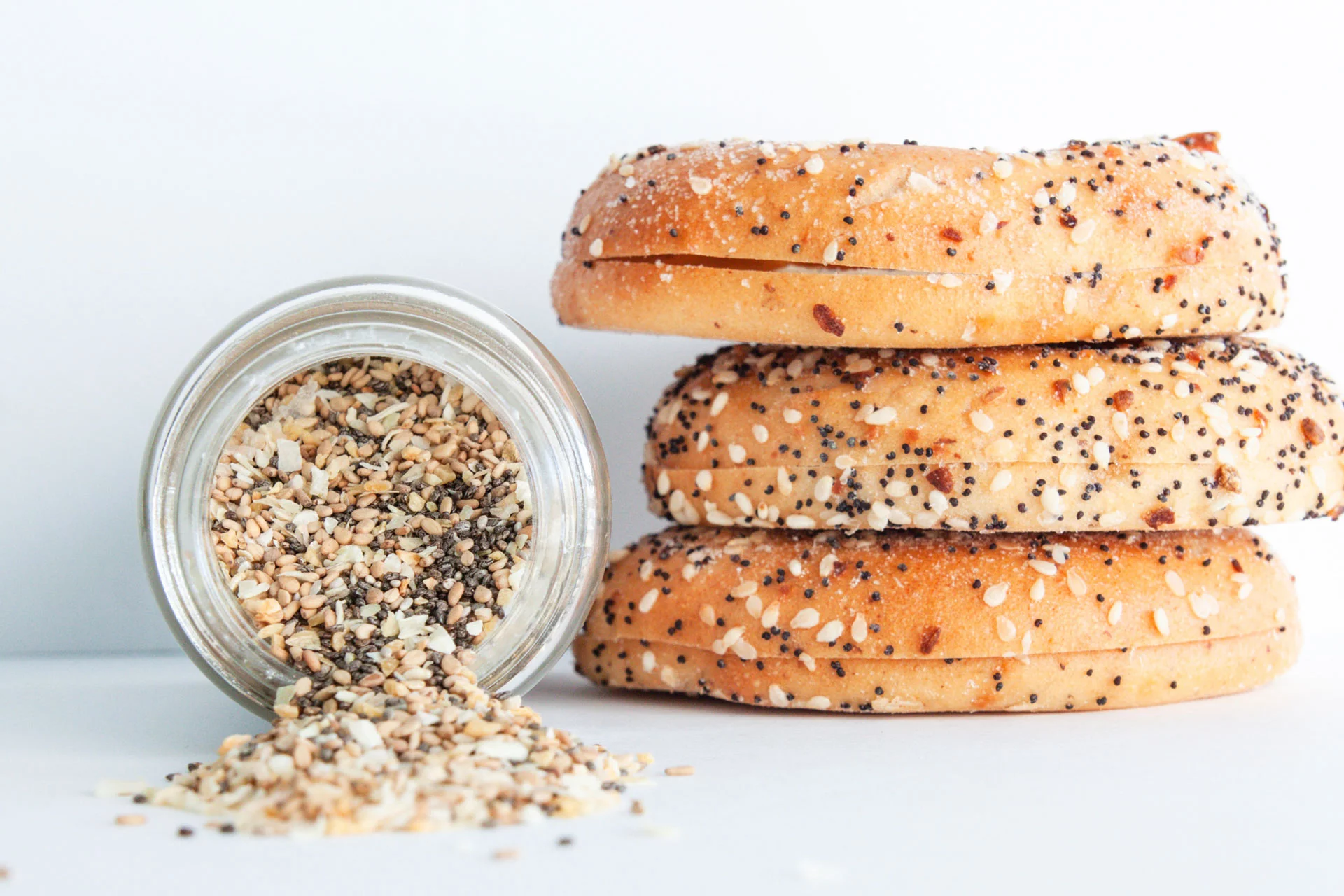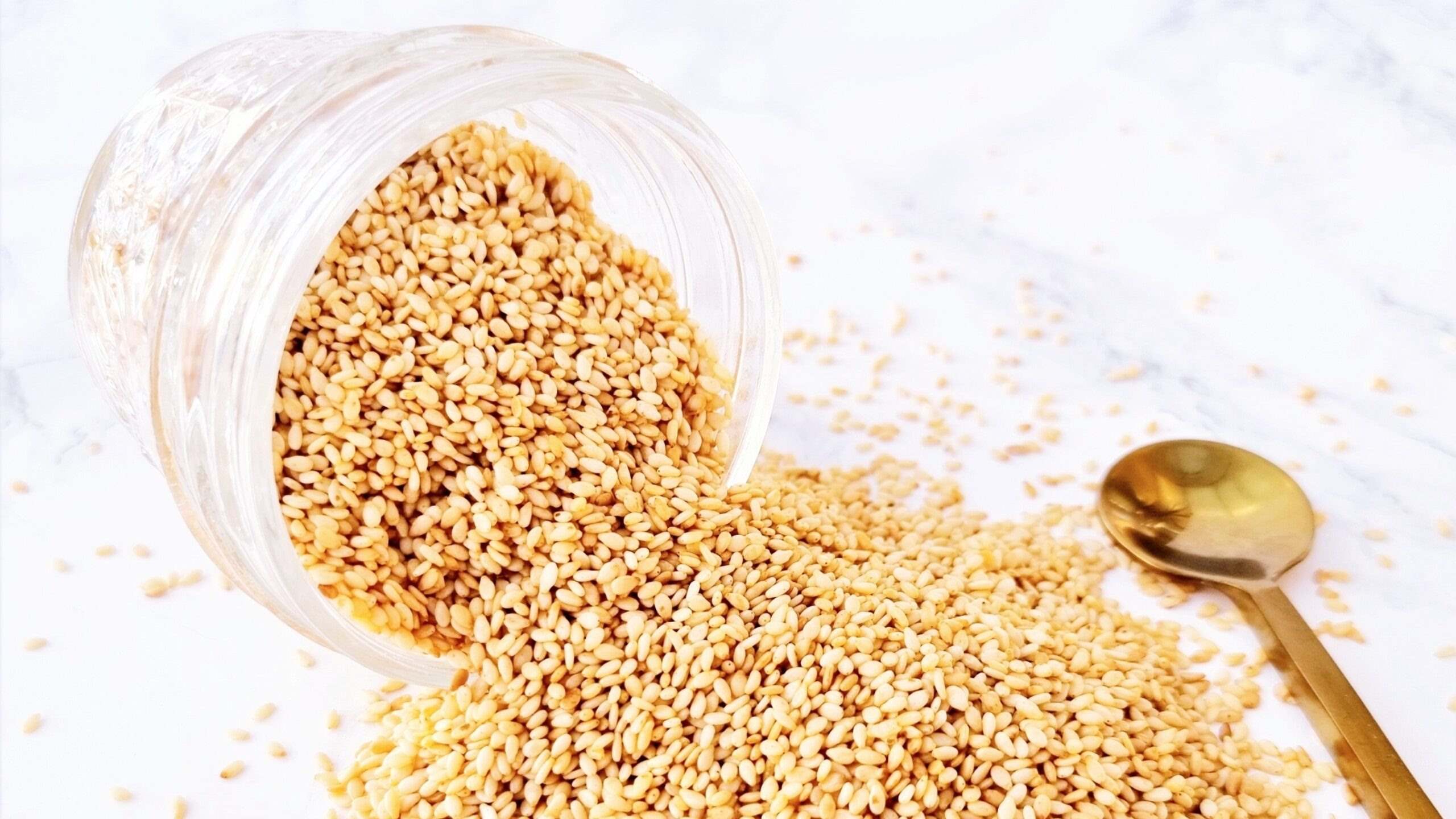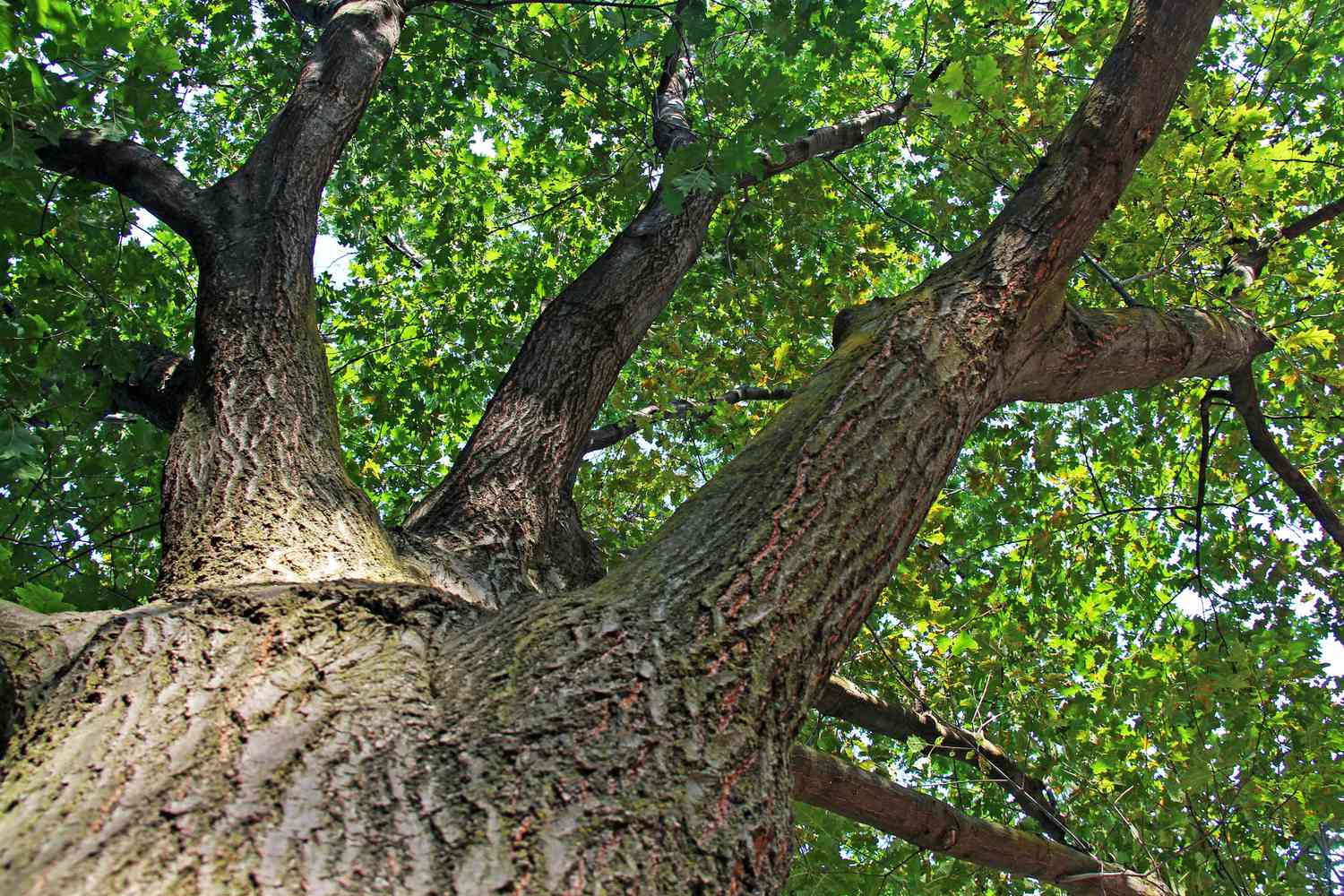Home>Types of Gardening>Edible Gardening>Where Do Sesame Seeds Come From
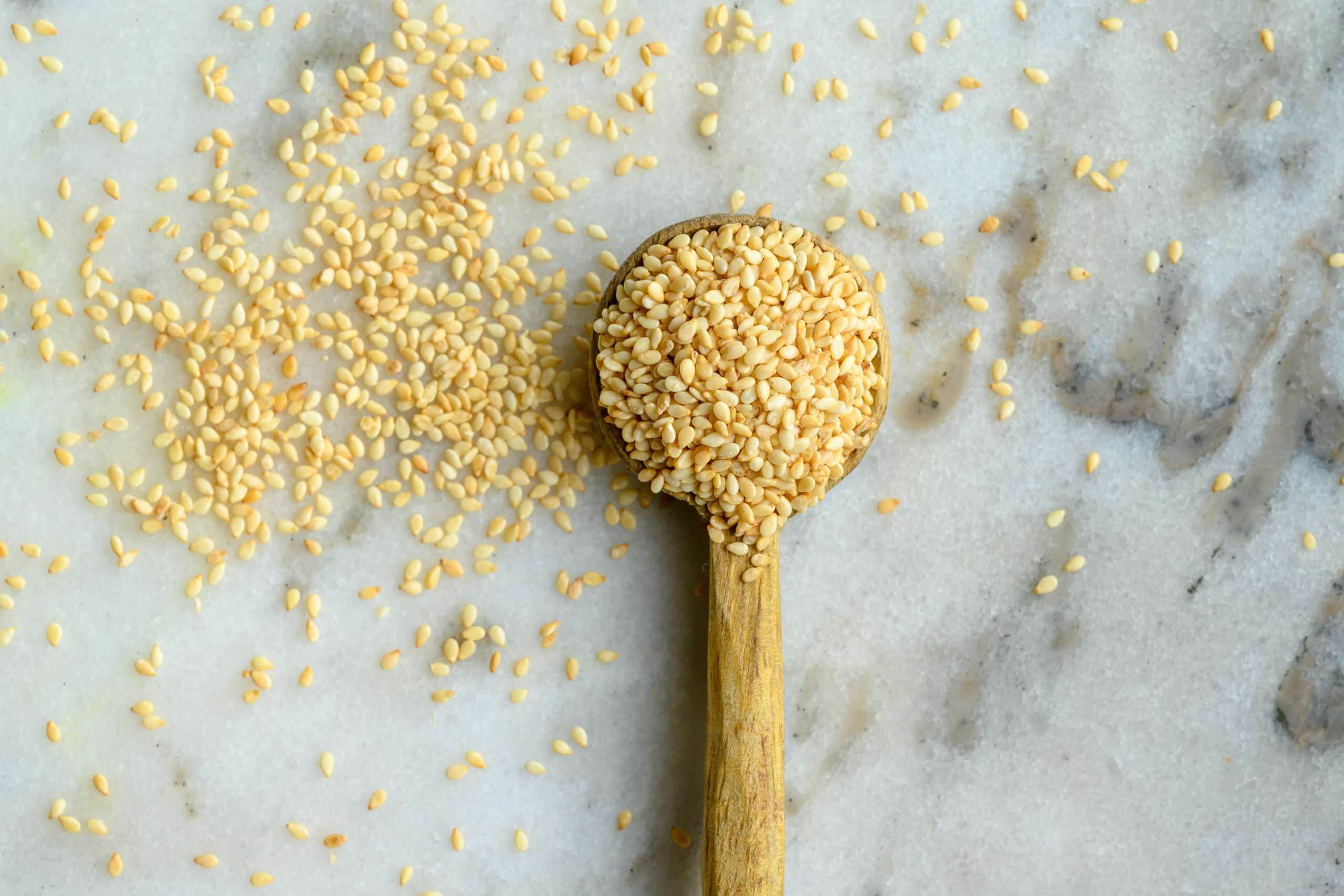

Edible Gardening
Where Do Sesame Seeds Come From
Modified: January 22, 2024
Learn about the origins of sesame seeds in edible gardening. Discover where these nutritious and versatile seeds come from and how to grow them at home.
(Many of the links in this article redirect to a specific reviewed product. Your purchase of these products through affiliate links helps to generate commission for Chicagolandgardening.com, at no extra cost. Learn more)
Table of Contents
Introduction
Welcome to the fascinating world of sesame seeds! These tiny yet powerful marvels have been an integral part of human civilization for thousands of years. Whether sprinkled on top of a bread roll, incorporated into a flavorful sauce, or pressed into oil, sesame seeds offer a delightful burst of nutty flavor and a wide array of health benefits. In this article, we will delve into the origins of sesame seeds, their cultivation, production, and various uses.
Sesame seeds, scientifically known as Sesamum indicum, are derived from the flowering plant of the same name, which belongs to the Pedaliaceae family. Native to sub-Saharan Africa, sesame seeds are one of the oldest oilseed crops known to humanity. Their cultivation dates back to as early as 3500 BCE in Mesopotamia, and they have been an important ingredient in cuisines and traditional medicines across cultures worldwide.
These tiny seeds are housed within oblong pods that burst open when they reach maturity, revealing a treasure trove of seeds that vary in color from white to red, brown, or black. The richness of nutrients locked inside these unassuming seeds makes them a valuable addition to any diet.
Throughout history, sesame seeds have not only been prized for their culinary uses but also recognized for their medicinal properties. In traditional Chinese medicine, sesame seeds were believed to nourish the liver and kidneys, promote fertility, and strengthen the body. In Ayurvedic medicine, they were used to balance the doshas and enhance digestive health.
In modern times, sesame seeds have gained widespread popularity due to their nutritional value. They are rich in protein, healthy fats, fiber, and an array of vital vitamins and minerals. They are also a source of unique compounds, such as lignans, phytosterols, and sesamin, which have been linked to various health benefits.
So join us on this journey as we uncover the secrets of sesame seeds – from their ancient origins to their present-day significance. Explore their cultivation processes, discover their varied culinary uses, and learn about the incredible health benefits they offer. Get ready to appreciate, savor, and harness the full potential of these tiny powerhouses!
History of Sesame Seeds
The history of sesame seeds is as rich and diverse as the seeds themselves. These little wonders have been cultivated and revered by ancient civilizations for thousands of years. The roots of sesame seed cultivation can be traced back to the Indus Valley civilization in present-day Pakistan and India, where sesame seeds were used for oil extraction, culinary purposes, and even as a form of currency.
Ancient Egyptians also valued sesame seeds and considered them a symbol of immortality. They believed that the gods themselves consumed sesame oil as a source of vitality. Egyptians used sesame seeds in a variety of dishes, including bread, cakes, and even as a condiment sprinkled on top of their meals.
The popularity of sesame seeds soon spread throughout the world. From there, their cultivation and usage expanded across ancient civilizations in Greece, Rome, Persia, and China. In ancient Greece and Rome, sesame seeds were used in cooking, baking, and as a garnish for various dishes. The Romans even brought sesame seeds to Europe, where they eventually became an essential ingredient in many traditional European cuisines.
In China, sesame seeds were first cultivated around 1000 BCE. They were highly valued for their oil, medicinal properties, and auspicious symbolism. Sesame seeds were viewed as a symbol of fertility, and it became a Chinese tradition to eat sesame seed sweets during the Lunar New Year to usher in prosperity and good luck.
During the Middle Ages, the popularity of sesame seeds continued to grow. Arab traders introduced sesame seeds to new regions, including Africa and the Middle East. They also played a vital role in the spread of sesame seed cultivation to India and Southeast Asia.
In modern times, sesame seeds have become a global commodity. They are grown and consumed in various parts of the world, with countries like India, China, Sudan, Myanmar, and Ethiopia being the leading producers. The cultivation of sesame seeds has not only remained an important economic activity but also preserved cultural traditions and heritage associated with these versatile seeds.
Today, sesame seeds are enjoyed in a myriad of ways across different cuisines and cultures. They are commonly used as a topping for bread, buns, and bagels, sprinkled on salads, stir-fries, and desserts, and even ground into a paste to make tahini. Sesame oil, extracted from the seeds, is also widely used in cooking due to its distinctive flavor and health benefits.
The long and storied history of sesame seeds serves as a testament to their enduring significance and versatility. From ancient civilizations to modern kitchens, these tiny seeds have captivated the attention and taste buds of people worldwide.
Cultivation of Sesame Seeds
The cultivation of sesame seeds involves a delicate balance of optimal growing conditions and careful agricultural practices. Sesame plants thrive in warm climates and are typically cultivated in tropical and subtropical regions around the world. Let’s explore the cultivation process of these versatile seeds.
Before planting sesame seeds, it is crucial to prepare the soil properly. Sesame plants prefer well-drained soil with a pH level ranging from 6 to 7. The soil should be rich in organic matter, as this helps retain moisture and provides essential nutrients for healthy plant growth.
Sesame seeds can be directly sown into the prepared soil or started in seed trays and transplanted later. They should be sown at a depth of about 1 to 1.5 centimeters. Adequate spacing between the seeds is essential to allow proper air circulation and prevent overcrowding.
One of the unique characteristics of sesame plants is their ability to withstand drought-like conditions. They have deep taproots that enable them to access water from deeper soil layers. Despite their water-saving abilities, sesame plants still require regular watering, especially during dry periods and when they are in the flowering and seed development stages.
In addition to irrigation, sesame plants benefit from regular weeding. Removing weeds ensures that the plants have access to the nutrients and sunlight they need for optimal growth. Mulching the soil can help suppress weed growth and retain soil moisture.
As the sesame plants grow, they will produce vibrant yellow or white flowers. These flowers eventually give way to elongated seed pods that contain the precious sesame seeds. Harvesting time is crucial, as it determines the quality and flavor of the seeds. Typically, sesame seeds are harvested when the pods turn brown and start to crack open naturally. Farmers can also perform a gentle squeeze test to assess seed ripeness.
Once the sesame seeds are harvested, they undergo a series of processing steps. The first step is threshing, where the seeds are separated from the plant stalks. This can be done by hand or through mechanized methods. Next, the seeds are carefully cleaned to remove any impurities or debris.
The cleaned seeds are then dried to reduce their moisture content. Proper drying is imperative to prevent mold growth and ensure the longevity of the seeds. Once dry, the sesame seeds can either be sold as they are or subjected to further processing, such as hulling or roasting, depending on the desired final product.
Sesame seed cultivation requires skill, knowledge, and careful management practices. It is a delicate yet rewarding process that results in the production of these tiny treasures. Whether grown on small family farms or on larger commercial scales, sesame seed cultivation plays a significant role in providing sustenance, economic opportunities, and culinary delights to people around the world.
Sesame Seed Production Around the World
Sesame seed production is a global endeavor, with several countries playing a significant role in cultivating and supplying these nutritious seeds. Let’s explore the top sesame seed-producing countries and gain insights into their production methods and contributions to the global sesame seed market.
India is the largest producer of sesame seeds, accounting for a significant portion of the global production. The favourable agro-climatic conditions in India, particularly in states like Gujarat, Rajasthan, Uttar Pradesh, and Madhya Pradesh, make it an ideal region for sesame cultivation. The production methods in India vary, with both traditional and modern farming practices employed.
China follows closely behind as a major producer of sesame seeds. The cultivation of sesame in China traces back thousands of years, and the country has a rich heritage of growing and utilizing these seeds. Various provinces, including Henan, Hebei, and Shandong, are known for their sesame seed production. China also embraces modern farming techniques and technology to enhance productivity.
Sudan, located in North Africa, is another notable player in sesame seed production. Sudan’s agricultural landscape, characterized by fertile soil and ample sunlight, creates prime conditions for cultivating high-quality sesame. The country specializes in producing organic sesame seeds, which are in high demand globally. Small-scale farmers, as well as larger commercial operations, contribute to Sudan’s impressive sesame seed production.
Moving to the African continent, Ethiopia shines as a significant producer of sesame seeds. The diverse agroecological zones and favorable weather conditions in Ethiopia make it an ideal region for sesame cultivation. Ethiopian farmers primarily grow sesame using organic and sustainable methods, contributing to the production of high-quality sesame seeds that are sought after worldwide.
Other countries that make notable contributions to global sesame seed production include Myanmar, Nigeria, Tanzania, and Mexico. These countries have unique agro-climatic conditions that support sesame cultivation, and their production methods range from small-scale farming to larger commercial operations.
With the increasing demand for sesame seeds in various industries, such as food, cosmetics, and pharmaceuticals, these top-producing countries play a crucial role in global supply. Their expertise, techniques, and resources contribute to the availability of high-quality sesame seeds that find their way into countless households and businesses around the world.
It is worth noting that the sustainability of sesame seed production is gaining attention. Efforts are being made to promote environmentally friendly practices, fair trade, and support for small-scale farmers to ensure the long-term viability of sesame cultivation and the well-being of the communities involved.
Harvesting and Processing Sesame Seeds
Harvesting and processing sesame seeds require careful attention to preserve the quality and flavor of these tiny nuggets. Let’s explore the steps involved in harvesting and processing sesame seeds, from the moment they are ready for harvest to the final product that reaches our tables.
The optimal time to harvest sesame seeds is when the seed pods turn brown and start to crack open naturally. Harvesting at this stage ensures that the seeds are fully mature and ready for processing. Farmers can also perform a gentle squeeze test to determine seed ripeness.
The traditional method of harvesting sesame seeds involves cutting the plants at the base and bundling them together to dry in the field. Once dry, the bundles are threshed by hand, and the seeds are separated from the plant stalks. This labor-intensive process requires skill and precision to avoid damaging the seeds.
In modern commercial farming, mechanized methods for harvesting sesame seeds have gained popularity. Combines or specialized harvesting machines are used to cut the plants, remove the seed pods, and separate the seeds. These machines efficiently speed up the harvest process, saving time and labor.
Once the sesame seeds are harvested, they undergo a series of processing steps to ensure they are clean, free from impurities, and ready for consumption. The first step is cleaning, where the seeds are subjected to air blasts or sieving to remove any debris or unwanted particles.
After cleaning, the sesame seeds are dried to reduce their moisture content. Proper drying is essential to prevent mold growth and prolong the shelf life of the seeds. Depending on the scale of production, drying can take place under the sun, through natural airflow, or in temperature-controlled drying facilities.
Following the drying process, the sesame seeds may undergo additional processing steps based on their intended use. One common process is hulling, which involves removing the outer husk or seed coat from the sesame seeds. This step can be done using mechanical dehulling machines that separate the hulls from the seeds.
Roasting is another common processing method for sesame seeds, as it enhances their flavor profile. The seeds are gently toasted in a dry pan or through specialized roasting equipment. Roasting time and temperature can vary depending on the desired flavor intensity.
Once the sesame seeds have been harvested, cleaned, dried, hulled (if necessary), and roasted (if desired), they are packaged and ready for distribution. The seeds can be sold as they are or further processed into various forms, such as sesame oil, sesame paste, or even ground into flour for baking purposes.
The meticulous approach to harvesting and processing sesame seeds ensures that they retain their nutritional value, flavor, and quality. Whether enjoyed as a snack, used as a key ingredient in cooking, or transformed into a value-added product, sesame seeds undergo a journey of careful handling and processing to reach our plates.
Nutritional Value of Sesame Seeds
Sesame seeds are not only delicious and versatile but also packed with essential nutrients that contribute to our overall health and well-being. These tiny seeds offer a range of vitamins, minerals, and beneficial compounds that make them a valuable addition to a balanced diet. Let’s explore the nutritional value of sesame seeds and understand why they are considered a nutritional powerhouse.
One of the standout features of sesame seeds is their nutrient density. They are an excellent source of protein, providing all nine essential amino acids that our bodies cannot produce on their own. This makes sesame seeds a valuable protein source for vegetarians and vegans.
Sesame seeds are also rich in healthy fats, particularly mono- and polyunsaturated fats, which have been associated with various health benefits. These fats help support heart health, reduce inflammation, and promote a healthy lipid profile.
In addition to proteins and healthy fats, sesame seeds are a good source of dietary fiber. Fiber plays a crucial role in digestion, helping regulate bowel movements and promoting satiety, which can aid in weight management.
Sesame seeds are abundant in essential minerals such as calcium, iron, magnesium, phosphorus, and zinc. Calcium is essential for maintaining strong bones and teeth, while iron is vital for oxygen transport and energy production. Magnesium plays a role in hundreds of enzymatic reactions in the body, and phosphorus is essential for bone health and cell function. Zinc is involved in immune function, wound healing, and DNA synthesis.
Furthermore, sesame seeds are a rich source of vitamins, including vitamin B1 (thiamin), vitamin B3 (niacin), vitamin E, and folate. Thiamin and niacin play important roles in energy metabolism and nerve function. Vitamin E is an antioxidant that helps protect cells from damage, and folate is essential for DNA synthesis and cell division.
In addition to their impressive nutrient profile, sesame seeds contain unique compounds that contribute to their health benefits. Sesamin, a lignan found in sesame seeds, has been studied for its antioxidant and anti-inflammatory properties. Sesame seeds also contain phytosterols, which are plant compounds that have cholesterol-lowering effects.
It’s important to note that while sesame seeds are highly nutritious, they are also calorie-dense. Regular consumption should be part of a well-balanced diet to ensure overall dietary balance and prevent excessive calorie intake.
Incorporating sesame seeds into your diet is easy and enjoyable. They can be sprinkled on salads, added to smoothies, used as a topping for stir-fries, or incorporated into homemade energy bars. Their nutty flavor and versatility make them a popular and nutritious choice for enhancing the taste and nutritional value of various dishes.
With their impressive nutrient content and potential health benefits, sesame seeds are undoubtedly a nutritional powerhouse that deserves a place in our daily diet. So go ahead and embrace these tiny yet mighty seeds to boost your overall nutritional intake and support your journey towards a healthier lifestyle.
Culinary Uses of Sesame Seeds
Sesame seeds are more than just a nutritious powerhouse – they are also a versatile ingredient that adds distinct flavor, texture, and visual appeal to a wide range of dishes. From savory to sweet, sesame seeds find their way into various culinary creations around the world. Let’s explore the exciting culinary uses of these tiny seeds and how they elevate our dining experiences.
One of the most common culinary uses of sesame seeds is as a topping or garnish. Whether sprinkled on bread rolls, bagels, or crackers, sesame seeds add a delightful crunch and nutty flavor. These seeds can also be used to enhance the appearance of dishes, such as sprinkling them over salads, stir-fries, or roasted vegetables, adding an appealing visual element.
Sesame seeds are a key ingredient in many Asian cuisines. In Chinese cuisine, they are often toasted and ground into a paste called “tahini” or used to make sweet treats like sesame balls or sesame-filled dumplings. In Japanese cuisine, sesame seeds are commonly used to make gomashio, a sesame salt seasoning, and are sprinkled over rice, noodles, or grilled meats.
South Asian cuisine also embraces sesame seeds in various forms. In India, sesame seeds are used in both sweet and savory dishes. They are toasted and ground into pastes for curries and chutneys, added to flatbreads like naan, or used to make laddoos, a popular sweet treat. In Middle Eastern cuisine, sesame seeds are a key ingredient in tahini, a creamy paste used in dishes like hummus and baba ganoush.
Roasted sesame seeds are often used to make sesame oil, which is a staple in many Southeast Asian cuisines. Sesame oil adds a rich nutty flavor to stir-fries, marinades, dressings, and sauces. It is also used for deep frying and as a finishing oil to drizzle over dishes for that extra burst of flavor.
Sesame seeds can also be ground into a fine powder called sesame flour, which can be incorporated into baking recipes. Sesame flour adds a unique nutty flavor and nutritional benefits to bread, cookies, cakes, and other baked goods. It can be used as a partial substitute for regular flour, adding a distinct twist to traditional recipes.
Let’s not forget the culinary wonders of halva, a sweet treat made from sesame seeds. Halva is a popular dessert across many cultures, including the Middle East, India, and Eastern Europe. It is a rich, dense confection made by combining ground sesame seeds with sugar or honey and often flavored with ingredients like cardamom, nuts, or dried fruits.
Whether used as a topping, a base for sauces and dressings, or as a central ingredient in various dishes and desserts, sesame seeds bring a delightful taste and texture to our culinary endeavors. Their versatility and ability to enhance both sweet and savory creations have made them an essential ingredient in cuisines around the world.
So next time you’re in the kitchen, reach for those sesame seeds and get creative. From traditional recipes to your own culinary inventions, allow the nutty and aromatic flavors of sesame seeds to captivate your taste buds and transform your dining experiences.
Sesame Seeds in Traditional Medicine
Sesame seeds have been revered not only for their culinary uses but also for their medicinal properties in traditional medicine systems around the world. For centuries, various cultures have recognized the therapeutic potential of these tiny seeds and incorporated them into traditional healing practices. Let’s explore how sesame seeds have been used in traditional medicine and the health benefits attributed to them.
In traditional Chinese medicine, sesame seeds have a long history of use for their nourishing properties. They are believed to nourish the liver and kidneys, promoting overall vitality and longevity. Sesame seeds are also considered to have a warming effect on the body and are particularly valued for their ability to strengthen the bones and joints.
According to Ayurvedic medicine, sesame seeds have a balancing effect on the doshas, the three energy forces that govern our physical and mental well-being. Sesame seeds are believed to pacify Vata dosha, providing grounding and nourishing qualities. They are thought to enhance digestive health, improve vitality, and support the reproductive system.
In traditional Egyptian medicine, sesame seeds were used for their medicinal properties. They were believed to have a cooling effect on the body and were used to alleviate symptoms of excessive heat, such as fever and inflammation. Sesame seeds were also used to soothe gastrointestinal discomfort and promote digestion.
Throughout the ages, sesame seeds have been recognized for their potential health benefits. They are rich in antioxidants, such as sesamin and vitamin E, which help protect cells from damage caused by free radicals. The lignans found in sesame seeds also contribute to their antioxidant and anti-inflammatory properties.
Sesame seeds are a natural source of phytosterols, plant compounds that have cholesterol-lowering effects. These phytosterols can help reduce LDL (bad) cholesterol levels and support cardiovascular health. Additionally, the presence of protein, fiber, and healthy fats in sesame seeds can contribute to a balanced diet and may aid in weight management.
Traditional medicine systems have recognized sesame seeds’ potential in supporting bone health. Sesame seeds are rich in calcium, a mineral essential for maintaining strong bones and teeth. They also contain magnesium, another vital nutrient for bone health and overall mineralization.
It’s important to note that while traditional medicine systems have recognized the medicinal properties of sesame seeds, these uses should complement, not replace, conventional medical treatments. As with any herbal remedy, it is advisable to consult with a qualified healthcare professional before incorporating sesame seeds or sesame seed-based preparations into your healthcare routine.
Sesame seeds have a rich history in traditional medicine, where they have been employed for their nourishing, warming, and healing properties. While modern research continues to uncover the health benefits of sesame seeds, these ancient medicinal uses highlight the enduring importance of these versatile seeds in promoting overall well-being.
Sesame Seeds in Modern Research
In recent years, modern scientific research has shed light on the many health benefits of sesame seeds. With advancements in technology and the growing interest in natural remedies, researchers have conducted numerous studies to explore the potential therapeutic uses of these tiny seeds. Let’s delve into the findings of modern research on sesame seeds and the valuable insights they provide.
One of the most fascinating areas of research surrounding sesame seeds is their cardiovascular health benefits. Studies have shown that sesame seeds and their oil can help lower LDL (bad) cholesterol levels while increasing HDL (good) cholesterol levels. This cholesterol-regulating effect is attributed to the high content of phytosterols and healthy fats in sesame seeds, which can contribute to reducing the risk of heart disease.
Sesame seeds also exhibit antioxidant and anti-inflammatory properties, thanks to the presence of sesamin and other lignans. These compounds help combat oxidative stress and inflammation, which are linked to various chronic diseases, including cancer, diabetes, and neurodegenerative disorders. Research suggests that regular consumption of sesame seeds could play a role in preventing or managing these conditions.
Studies have highlighted the antimicrobial and antibacterial properties of sesame seeds. Research has shown that sesame seed extracts have inhibitory effects against various types of bacteria and fungi, including those that cause infections like Staphylococcus aureus or Candida albicans. These findings support the traditional use of sesame seeds in maintaining oral hygiene and preventing microbial growth.
One appealing characteristic of sesame seeds is their potential role in weight management. The combination of protein, healthy fats, and fiber in sesame seeds can contribute to increased satiety and reduced calorie intake. Additionally, research suggests that sesame seeds may have a positive effect on fat metabolism, particularly in reducing abdominal fat accumulation.
Sesame seeds have also been studied for their potential anti-cancer properties. Some studies have shown that sesame seed extracts may inhibit the growth and spread of certain types of cancer cells due to their antioxidant and anti-inflammatory activities. However, more research is needed to fully understand the mechanisms and potential therapeutic applications.
Exploring the nutritional composition of sesame seeds, research has revealed their richness in essential nutrients like calcium, magnesium, and iron. Calcium, in particular, is crucial for maintaining strong bones and preventing conditions like osteoporosis. Sesame seeds’ high calcium content, combined with their other nutritional components, makes them a valuable food source for promoting bone health.
While modern research provides valuable insights into the health benefits of sesame seeds, it is important to note that further studies are ongoing to explore their full potential. Researchers are continuously investigating the compounds present in sesame seeds and their mechanisms of action to better understand how they can be utilized in preventive and therapeutic approaches.
As the body of scientific evidence grows, sesame seeds’ nutritional and medicinal properties continue to be reaffirmed. They offer a promising avenue for incorporating natural remedies into healthcare practices and promoting overall well-being.
Conclusion
Sesame seeds are not just a humble addition to our kitchen pantries; they are a treasure trove of nutrition and rich cultural history. From their ancient cultivation and use in traditional medicine to their modern-day culinary versatility and scientific research, sesame seeds have captivated the attention and taste buds of people around the world.
These tiny seeds are packed with nutrients, offering a significant source of protein, healthy fats, fiber, vitamins, and minerals. Their nutrient density makes them a valuable addition to a well-balanced diet, providing numerous health benefits, including enhanced cardiovascular health, reduced inflammation, and the potential to support weight management.
Culturally, sesame seeds have played important roles in diverse cuisines, adding flavor, texture, and visual appeal to a wide range of dishes. They have found their way into savory and sweet recipes alike, from breads and stir-fries to sweets and confections. The culinary uses of sesame seeds are as diverse as the cultures that incorporate them into their traditional dishes, giving us a glimpse into the rich tapestry of global gastronomy.
The incorporation of sesame seeds in traditional medicine, supported by modern research, underscores their medicinal properties and potential therapeutic applications. From their traditional roles in nourishing organs and balancing energies to their modern-day exploration as potential agents in promoting heart health, reducing inflammation, and even inhibiting the growth of certain cancer cells, sesame seeds continue to hold promise in the holistic approach to well-being.
As we embrace the nutritional and medicinal benefits of sesame seeds, it is important to celebrate the rich cultural heritage associated with these tiny seeds. From their ancient origins in Mesopotamia to their cultivation in various regions around the world today, sesame seeds have been part of human civilization for thousands of years, contributing to the tapestry of global food and healing traditions.
Sesame seeds invite us to embark on a culinary and cultural journey, where we can explore their diverse uses, experiment with their flavors, and appreciate the health benefits they offer. So let us savor these tiny powerhouses, utilizing their nutritional value and culinary versatility to enhance our meals and promote well-being in both body and spirit.



